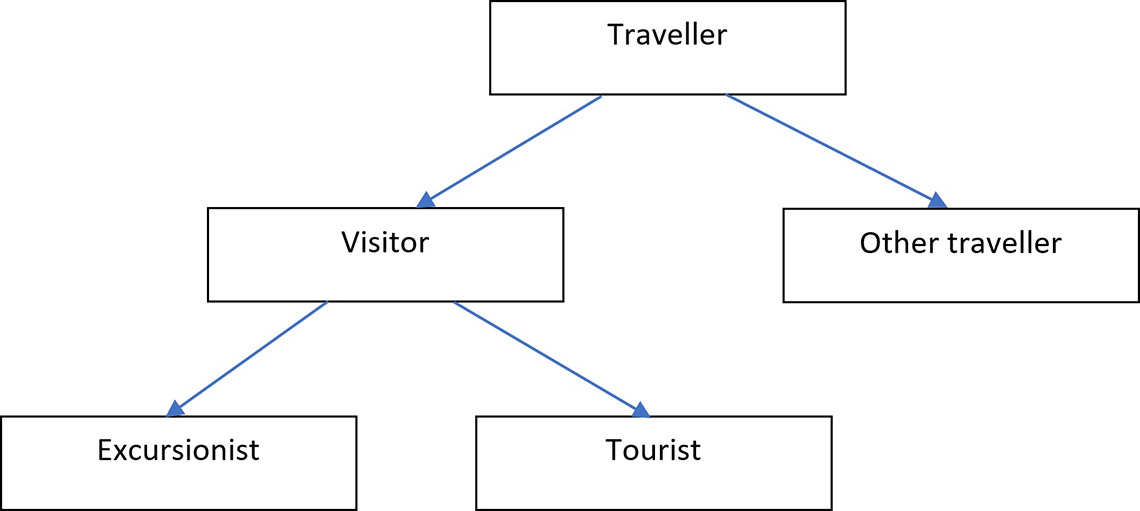
A traveller is a person making an entry into Canada for any purpose and any duration. Travellers can then be sub-divided into visitors and other travellers.
A visitor is a traveller whose trip purpose is related to tourism, namely personal, business, study, to be a crew member in a private vehicle (private aircraft or private boat) or whose purpose is not known, and whose trip duration is less than one year. Visitors can be split further into excursionists and tourists.
An excursionist is a visitor without an overnight stay, meaning that the arrival and departure occurs in the same calendar day. Also referred to as a "same-day visitor".
A tourist is a visitor with a trip duration of at least one night, meaning that the arrival and departure occur in different calendar days. Also referred to as an "overnight visitor".
An other traveller refers to a traveller whose trip purpose is not related to tourism, namely to be a crew member in a commercial vehicle (commercial aircraft, ferry, cruise ship or other commercial boat, truck, bus or train), a traveller with an other non-tourism related purpose (work, immigration, military service, diplomats or consular staff), or a traveller whose trip purpose is related to tourism, but has a trip duration of 365 or more nights.
Definitions for terms used in Frontier Counts are based on the United Nations World Tourism Organization's International Recommendations for Tourism Statistics 2008. However, in some cases, they are modified to align with the Canadian context.
Source: Statistics Canada, Frontier Counts program, 2022